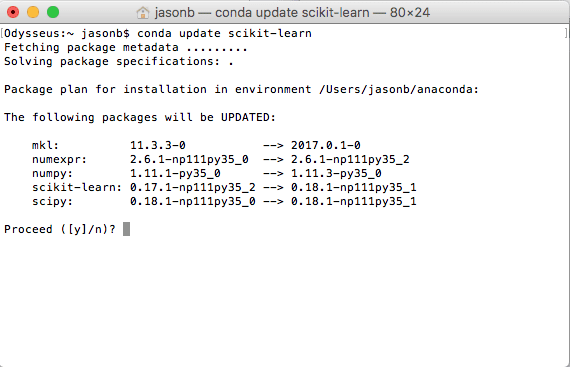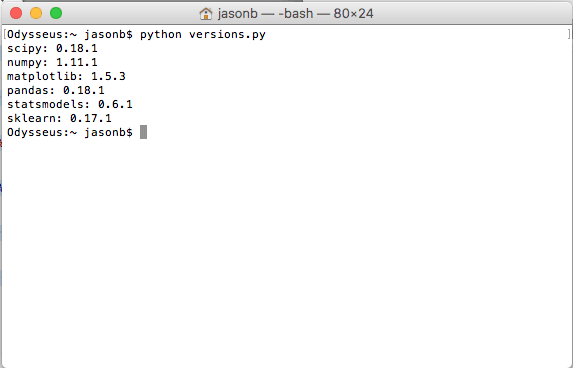

- #Scipy win64 python 3.5 download install
- #Scipy win64 python 3.5 download software
- #Scipy win64 python 3.5 download free
Installing on Apple Silicon M1 hardware ¶ Minimum version of Scikit-learn dependencies are listed below along with itsįor installing on PyPy, PyP圓-v5.10+, Numpy 1.14.0+, and scipy 1.1.0+Īre required. Matplotlib and some examples require scikit-image, pandas, or seaborn. Scikit-learn plotting capabilities (i.e., functions start with “plot_”Īnd classes end with “Display”) require Matplotlib. Particular configurations of operating system and hardware (such as Linux on When using pip, please ensure that binary wheels are used,Īnd NumPy and SciPy are not recompiled from source, which can happen when using
#Scipy win64 python 3.5 download install
If you have not installed NumPy or SciPy yet, you can also install these usingĬonda or pip. Prior to running any Python command whenever you start a new terminal session. Note that you should always remember to activate the environment of your choice Package manager of the distribution (apt, dnf, pacman…). In particular under Linux is itĭiscouraged to install pip packages alongside the packages managed by the

Version of scikit-learn with pip or conda and its dependencies independently ofĪny previously installed Python packages.

Using such an isolated environment makes it possible to install a specific Strongly recommended to use a virtual environment (venv) or a conda environment. Note that in order to avoid potential conflicts with other packages it is
#Scipy win64 python 3.5 download software
The index under Topical Software in the navigation bar lists these domains and other destinations for scientific software using Python.Python3 -m pip show scikit-learn # to see which version and where scikit-learn is installed python3 -m pip freeze # to see all packages installed in the active virtualenv python3 -c "import sklearn sklearn.show_versions()" python -m pip show scikit-learn # to see which version and where scikit-learn is installed python -m pip freeze # to see all packages installed in the active virtualenv python -c "import sklearn sklearn.show_versions()" python -m pip show scikit-learn # to see which version and where scikit-learn is installed python -m pip freeze # to see all packages installed in the active virtualenv python -c "import sklearn sklearn.show_versions()" python -m pip show scikit-learn # to see which version and where scikit-learn is installed python -m pip freeze # to see all packages installed in the active virtualenv python -c "import sklearn sklearn.show_versions()" conda list scikit-learn # to see which scikit-learn version is installed conda list # to see all packages installed in the active conda environment python -c "import sklearn sklearn.show_versions()" This website, together with other subdomains of the domain, serves as a portal for all scientific computing with Python, not just NumPy and SciPy. NumPy and SciPy are two of many open-source packages for scientific computing that use the Python programming language. If you need to manipulate numbers on a computer and display or publish the results, give SciPy a try! NumPy and SciPy are easy to use, but powerful enough to be depended upon by some of the world's leading scientists and engineers.
#Scipy win64 python 3.5 download free
Together, they run on all popular operating systems, are quick to install, and are free of charge. The SciPy library is built to work with NumPy arrays, and provides many user-friendly and efficient numerical routines such as routines for numerical integration and optimization. The SciPy library depends on NumPy, which provides convenient and fast N-dimensional array manipulation. It is also the name of a very popular conference on scientific programming with Python. SciPy (pronounced "Sigh Pie") is open-source software for mathematics, science, and engineering.


 0 kommentar(er)
0 kommentar(er)
